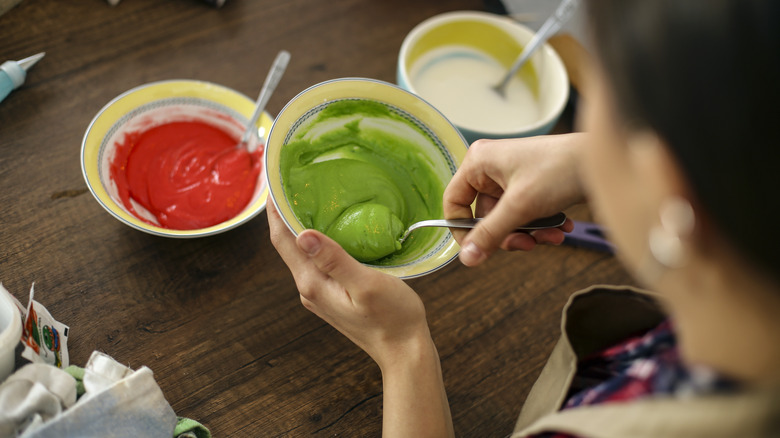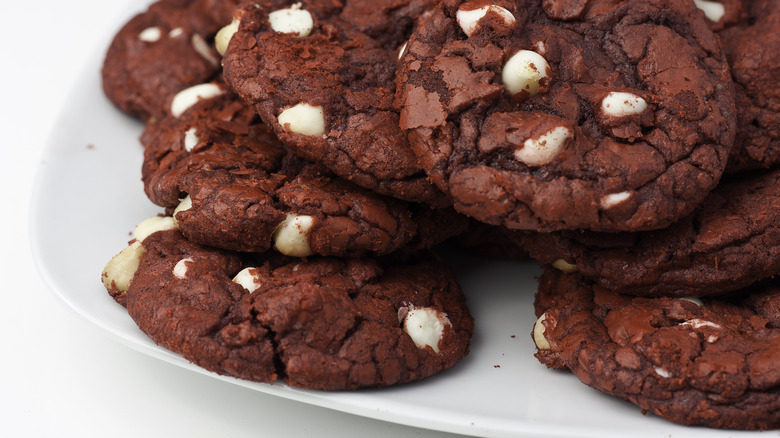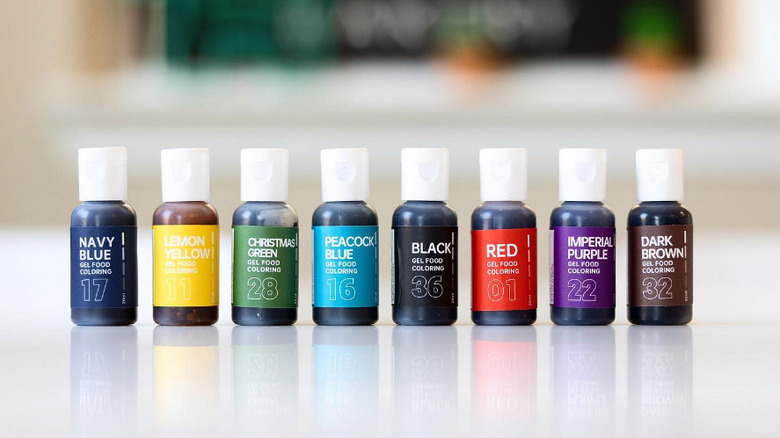Gel Vs Liquid Food Coloring: Which Is Best For Cookie Dough?
Cookie dough is already perfect — easy to whip up and bursting with a flavor that instantly triggers the "yum" response in your brain. But after munching on plain golden-brown cookies for a while, your eyes might start craving something more exciting. That's where a dash of food coloring in your favorite shade can work wonders!
When it comes to colors, you've got many options, but the two most popular types are liquid and gel food coloring. Liquid colors are the classic choice, typically found in small, squeezable bottles. As the name suggests, they have a watery, ink-like consistency. Gel food coloring, on the other hand, comes in tiny jars and has a more solid appearance akin to Jell-O. Both types will color your dough effectively, but they'll have different effects on flavor and texture due to their composition. Liquid food coloring can make your dough a bit too wet, so many people prefer gel coloring. However, it's a good idea to better understand the differences between the two before making your choice.
Liquid colorings are a classic
Liquid food coloring has long been a common choice for home bakers due to its accessibility and simplicity. Just a few drops of the stuff in whatever you're making and voila, beautifully colored food!
However, seasoned users of food coloring will know that there are quite a few limitations to this type. These water-based dyes are ideal for achieving softer, pastel shades, but because their pigment concentration is the lowest out of all the food colorings commercially available, you'll have to add quite a lot to achieve vibrant colors. For instance, if you're aiming for vivid Red Velvet cookies, be prepared to add quite a lot to reach the desired crimson hue.
Using a lot of these liquid dyes isn't great for your dough, either. The liquidness of the coloring is due to extra water, which can add more liquid to your dough and thin it out or change its consistency. The result is a watery dough that'll excessively spread during baking. So, instead of perfectly shaped cookies, you might end up with misshapen blobs. Nevertheless, if you're looking for something inexpensive, widely available, and just want a very light tone without bright, saturated colors, it'll do the trick.
Gel-based colorings are the way to go!
You'll have the most chance of success when you use gel-based colorings, not just because they won't make your cookie dough too watery but because their color is also more concentrated. This means you'll be able to achieve very rich, vibrant colors using very little of the gel. In fact, if you're using this type of coloring for the first time, you'll have to be very careful not to over-color the dough.
Start by adding a tiny amount, just enough to fit on the tip of a toothpick. Gradually blend it into the dough, mixing thoroughly until you reach your desired color. If the shade isn't bright enough, add more gel until you achieve the perfect tone. It's a lot more hands-on compared to the liquid stuff, but if you're aiming for a bright tone, you'll love the result you get. (Just make sure you don't accidentally buy decorating gel instead of gel food coloring.)
Aside from gel-paste coloring (the one mentioned above), there are times when it's best to use liquid gel food coloring, which gives you the same brilliance as the paste stuff, but it has a more liquid-like form that's easier to blend into recipes similar to traditional liquid gel. It's a great all-purpose coloring ... if you can find it — this type can be quite challenging to track down in stores.


